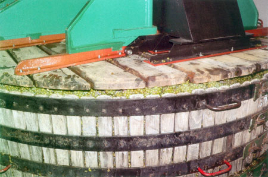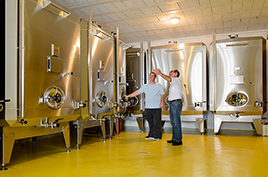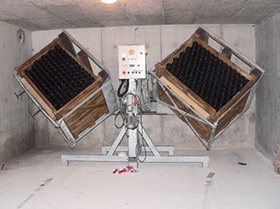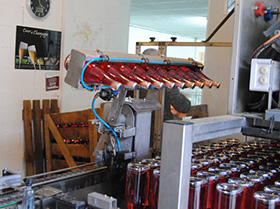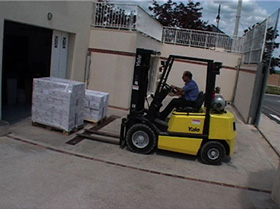Tradition and modernityTo make a good Champagne, you must have good base wines which you obtain from the best grapes. It seems obvious, but you must be able to control all the steps of the wine making process.This is the reason why we can't get away from our vineyards in the Summer. You must regulate the rate of vine-growth and make sure to do the tipping, pinching-back, topping and leaf thinning. Between 15th July and 15 August, we must aerate the grapes and sometimes remove some to allow a better qualitu for the other. We call this step :"the Green Harvest". Harvesting in Champagne remains an entirely manual process. We need 15 to 16 pickers for a period of 8 to 10 days for the picking of our grapes. An experienced picker can harvest 400 to 800 kg of grapes per day, depending on the weight of the grapes. |
The pressing of our Champagne grapes is made in a press house used by several grower producers for a better organization of the harvest, but of course, everyone makes sure he is getting back the juice of his own grapes. We are using a traditional vertical press with fixed press-pan. The 'retrousse', an operation to return the edges of the press-cake towards the central part of the press, is done manually with a fork. Today juice extraction is strictly limited by law to 25.5 hectoliters per 4000kg press-load of grapes (known as marc). The traditional vertical press is regarded as the reference in Champagne. The principle behind Champagne pressing is to apply just enough pressure to rupture the intermediate juice zone of the berry. The ideal starting pressure is 50g/cm², (equivalent to squeezing a grape gently between your thumb and forefinger) stepping up the pressure gradually, from 100g/cm² to 200g/cm² all the way to 1kg/cm². The juice will then ferment in small volume inox vats for 18 months. Now we have to keep one harvest in vats : it's our high quality reserve. Inox bring us a low process ageing.
We are going to be helped by new technics – the principle being known by our grandparents, when they opened their cellar doors during wintertime for the cold to stabilize the wine. Stabilization is a vital step in producing a quality wine. Cold stabilization merely involves chilling wine to -4°c during a few hours. This causes tartaric acid to crystallize out. Filtration will follow and our wine will be ready for the blend if required. The bottling will be done twenty months after the harvest at the rate of 4000 to 5000 bottles an hour. As we are using mechanical riddling technics and automated disgorgement 15 to 60 months after bottling, we have to wait a minimum of 36 months after the harvest before selling our Champagne.
|


